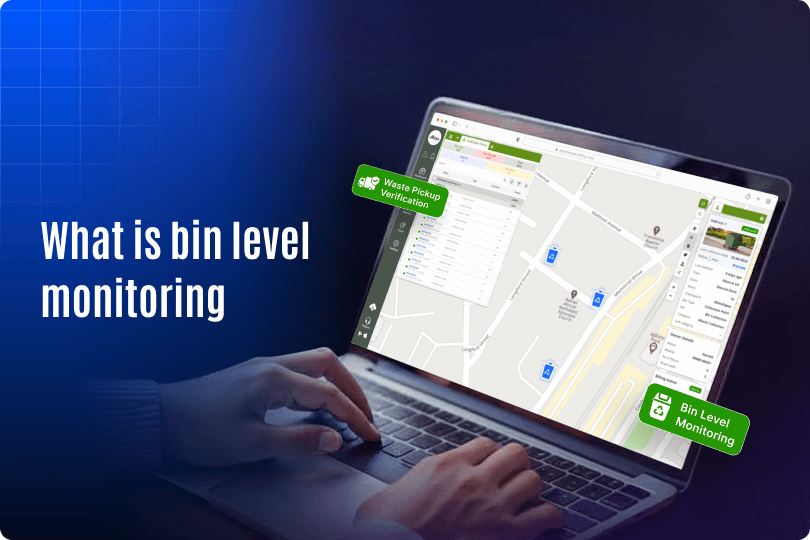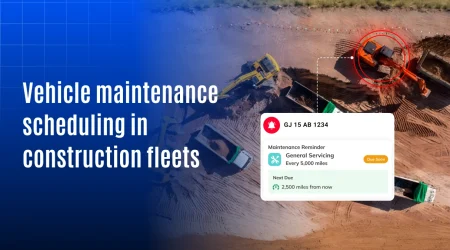What Is Bin Level Monitoring and Why Does It Matter?

Every year, the world generates over 2 billion tonnes of solid waste, and less than 20% is recycled. The rest ends up in landfills or unmanaged dumps, causing overflowing bins, environmental hazards, and citizen complaints. By 2040, global solid waste generation is expected to rise by 70%. This growth will put immense pressure on municipalities and contractors to manage collection more efficiently.
Traditional methods like manual bin checks, fixed collection schedules, and paper-based reporting simply can’t keep up with this growth. They lead to unnecessary trips, higher fuel costs, and bins that either sit empty or overflow before pickup.
This is where bin level monitoring changes the game. With real-time insights into bin fill levels, locations, and washing needs, waste managers shift from outdated, reactive practices to a proactive, data-driven approach that reduces costs and keeps communities cleaner.
What is bin level monitoring?
Bin level monitoring is the use of smart sensors and software to track waste bin fill levels, status, and lifecycle in real time. Instead of sending crews to check bins blindly, managers know exactly when a bin is full, unwashed, or requires maintenance.
It is part of smart waste management ecosystem that includes:
- A Manager App to view bins and routes.
- A Collector App to scan bins using QR/RFID for verification.
- A Citizen App for complaints and pickup requests.
Key features of bin level monitoring
- Live tracking of bins
Monitor bins on a real-time map and know their current status. - Detailed bin information
View visited status, wash status, and maintenance history with just a click. - Bin washing management
Track washed vs. unwashed bins and assign cleaning tasks easily. - Lifecycle insights
Plan for timely replacements with complete usage and maintenance records. - Smart Bin integration
IoT sensors detect fill levels and automatically trigger collection jobs. - QR/RFID verification
Collectors scan bins to confirm pickups, ensuring proof of service.
Why bin level monitoring matters
Bin level monitoring is more than just a feature it directly addresses the challenges cities, contractors, and facility managers face every day. Here’s why it matters:
- Prevents overflow and complaints
Full bins trigger alerts before they spill over, reducing unhygienic conditions and citizen complaints. - Cuts operational waste
Crews no longer drive to half-empty bins. This reduces unnecessary trips, fuel use, and labor hours. - Builds transparency and trust
Real-time updates and accurate reporting show clear proof of service, increasing accountability and public confidence. - Supports sustainability goals
Optimized routes and fewer trips mean lower emissions, aligning waste operations with environmental standards. - Ensures Compliance
Automated data and logs make it easier to meet municipal and regulatory requirements.
Business benefits of bin level monitoring
- Reduced costs
Fewer trips and better use of resources help save fuel, lower vehicle wear, and cut labor expenses. - Better asset use
Tracking bin lifecycle ensures timely maintenance and replacement, giving maximum value from each asset. - Improved service quality
Cleaner bins, on-time collections, and fewer overflows keep citizens satisfied and reduce complaints. - Smarter planning
Analytics show waste patterns, helping managers plan routes, assign resources, and forecast demand. - Sustainability gains
Optimized routes and fewer unnecessary trips reduce emissions and support environmental goals.
Final thought
Bin level monitoring is no longer an option. It’s becoming a strategic necessity for municipalities, contractors, and facility managers. By delivering real-time insights, cost savings, compliance, and sustainability gains, it helps businesses reduce overheads while improving service quality and client satisfaction.
For B2B operators, investing in bin level monitoring means more than cleaner streets. It means higher ROI, stronger customer trust, and long-term growth in a competitive market. The sooner organizations embrace this technology, the faster they unlock measurable business value.



